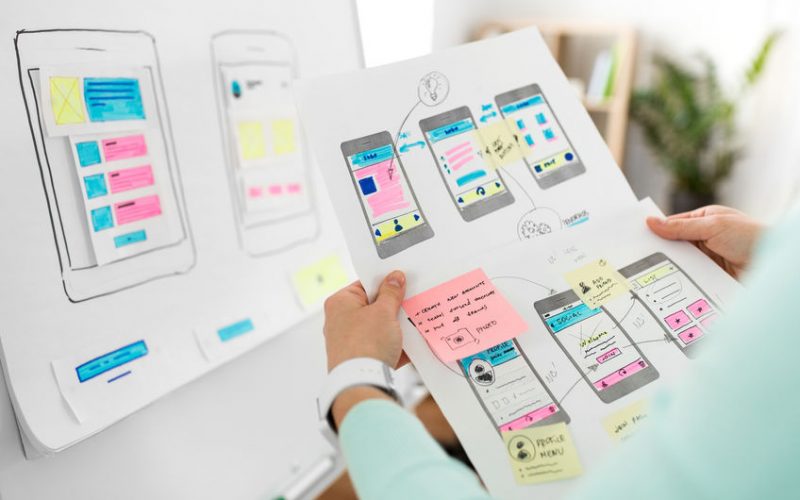
Just as is the case in other parts of the world, the demand for mobile applications in Australia seems to be growing in tandem with the demand for smart devices such as smartphone and phablets, among others. More specifically, according to the Australian Communications and Media Authority (ACMA), 72% of smartphone owners in Australia download at least one mobile application every six months. Most Australians download and use mobile apps to stream video content, access social networking sites, access banking services, play games, as well as access e-commerce sites. If you have an idea that you would like to turn into a mobile application, it would be wise to consider the legal aspects associated with such a decision, including the following:
Business Structure
Before turning your idea into a mobile app, you need to decide what kind of business structure suits your needs. In Australia, you can register a business name or a company. To register a business name, you must choose an entity that will hold the business name. Acceptable entities include a joint venture, an individual, incorporated entity (such as a company), a partnership, or an unincorporated entity (such as a trust). However, a business name does not necessarily create a legal entity. This means that an entrepreneur who opts to register a business name does not enjoy privileges such as limited liability or corporate tax rates. On the other hand, if you register a company, you will benefit from limited liability, corporate tax rates, and you can conduct business throughout Australia without having to register your company in each territory or state. This is particularly important if your mobile app idea involves selling products to consumers.
Of course, you will also have to decide how you would like to operate and run your mobile app business. This means defining aspects such as share structure, officeholders, members, replaceable rules, and constitution. This might seem like too much hassle but it makes financial sense. For example, your mobile app might go viral attracting the interest of investors or other companies interested in a takeover. If you do not have a business structure in place, investors will most likely shy away from investing their money. Furthermore, a business structure such as a limited company protects you from creditors and lawsuits should your mobile app business fold. This is according to the Australian Securities & Investments Commission (ASIC).
Copyright
It is worth noting that copyright would just protect your original expression of mobile app idea but not the idea itself. This means that you can copyright art, literature, film, computer programs, music, or drawings. In Australia, copyright protection spans the life of the creator plus an additional 70 years after the demise of a copyright owner. The Australian Copyright Council recommends that one should put a copyright notice on his or her work. This protects your unique work such as a website, mobile application, graphics, or any other form of creative output.
According to the Australian Copyright Council, a copyright owner has the right to publish his or her work for the first time, reproduce the same in various ways including photocopying, scanning, or filming, as well as distribute published work to the general public via the Internet or through print media. Nevertheless, there is a rule that allows other people to use copyrighted work for the purposes of reporting news or research. However, this does mean that other people can copyright your work for commercial purposes. Australian copyright law prohibits using copyrighted work to make money. Therefore, to protect your app, you should seek legal advice from a lawyer with a good grasp of copyright law before you use someone else’s work as part of your mobile application. In fact, the Australian Copyright Council states that altering a copyrighted image to create a new one could be a breach of copyright law. As you seek to copyright your work, make sure you do not use the creative output of other people in your mobile app.
Trademarks
Unlike copyright, a trademark protects a word, sound, picture, logo, shape, letter, number, phrase, or a combination of all these aspects. The aim is to distinguish your product or mobile app from other apps. Without trademark protection, other businesses can use your unique brand, name, or logo to sell goods or services to unsuspecting consumers.
Think of a trademark as an important part of your mobile app marketing strategy. The more successful your mobile application, the more valuable the trademark becomes. Contrary to popular belief, you do not have to register a trademark to use it. You can use an unregistered symbol or logo to represent your mobile app. The problem with this approach is other people can copy the same logo, word, or number. In such a case, it is almost impossible to stop them from copying your unique name or picture. In Australia, trademarks generally have a lifetime of 10 years after which you will have to pay renewal fees in order to continue using the trademark for another 10 years. This process can go on indefinitely so long as you remember to pay the renewal fees every 10 years.
Before you rush to register a trademark, remember that IP Australia does not just register any name or logo. Instead, it only registers unique items that other entrepreneurs or people do not use regularly. For example, you cannot trademark a common surname or geographic name, so it is advisable to invent your own unique name such as Kodak or Lego. If your mobile application will be available to consumers in other countries, you can access trademark protection through the Madrid Protocol. This international treaty allows Australian entrepreneurs to acquire trademark protection by making a single application. You can file this trademark application in Australia through IP Australia. In addition, you can choose to apply for trademark protection across all or some of the countries that have signed the Madrid Protocol.
A common mistake entrepreneur makes is to register a business name and fail to trademark the same. The fact that you have registered a business name or company name does not give you proprietary rights over it. You will have to go an extra mile and trademark the name if you do not want to face costly legal tussles and claims.
Non-Disclosure Agreement (NDA)
If you will be pitching your idea to a developer, you need to have a non-disclosure agreement or confidentiality agreement ready. This legally binding contract compels a developer not to disclose your mobile app idea or use it to create his or her own mobile app. For example, if you have come up with a data compression algorithm that no one else is using, you do not want to give away your secret before a developer signs an NDA.
A typical NDA contains the following information:
- Time frame for the non-disclosure agreement. For example, the NDA could obligate the developer to keep your idea secret for five years.
- Names of the parties involved.
- An outline of your mobile app idea.
- Legal exceptions and other aspects that do not fall under the NDA.
Although having a nondisclosure agreement at hand is a good idea, it does not translate to 100% protection. It only offers some level of protection and it is up to you to choose a reputable company that has been in business for several years. A well-established business is unlikely to steal your ideas because they have a reputation to protect.
It is also wise to hire an attorney to prepare an NDA for you. Downloading an NDA from the internet is not a good idea because every business or mobile app idea is unique. You do not want to end up with an NDA that does not protect your idea properly. Non-disclosure agreements are quite common in the mobile app development in Sydney industry and your developer should be willing to sign an NDA. If he or she is not willing to sign an NDA because of one issue or another, take your business elsewhere.
Consumer Facing Agreements
Also known as End User License Agreements (EULAs), this is a legal tool that you can use to prevent consumers who use your mobile application from stealing your idea and then using it to develop their own apps. In general, such an agreement would compel every user of your mobile app to agree to certain terms and conditions. There is no standard template for an end user license agreement and it is up to you and your lawyer to come up with one that suits your mobile application.
Nevertheless, your mobile app EULA should contain warranty obligations, copyright information, trademark information, prohibitions (such as warning users not to reverse engineer your app), as well as patent information. If you are planning to launch your mobile app on the iOS platform, you can use Apple’s ready-made EULA. Alternatively, you can create your own EULA but include Apple’s “mandatory terms”.
The Android platform also comes with its own Android Market Developer Distribution Agreement. The default terms for this license are “non-exclusive, worldwide, and perpetual”. If you believe that such a license gives consumers too much leeway, you can come up with your own custom end user license agreement. Once again, make sure you go through their default EULAs and decide if you want to use them or custom-made ones. If you are serious about protecting your mobile app idea, get a good lawyer to guide you through this process.
App Development Agreement
An app development agreement is quite different from a non-disclosure agreement. This type of agreement defines the design and development aspects of your mobile app. This is important because developers tend to reuse the same algorithms or code to develop different mobile apps. For example, it typically takes a lot of time and effort to write code for a new game engine, so some developers opt to use open source game engines.
However, you might feel that you do not want open source software in your mobile app. In such a case, your developer is likely to ask you to pay more for the effort involved in creating algorithms or game engines from scratch.
Another aspect that an app development agreement will touch on is the choice of programming language. In most cases, this depends on the platform you are targeting. For a mobile app that will end up on the iOS platform, developers will most likely use the Objective C programming language. If your app idea is a game, your developer might use the Lua programming language for game logic.
Finally, the app development agreement will define who owns the source code for your mobile app. Even if you own the original idea for the app, this does not mean that you own the source code as well. You might be surprised to learn that the source code belongs to the developer until he or she “assigns” ownership to you. If you do not own the source code, the developer can prevent you from using or profiting from your own mobile application in the future. To ensure this does not happen, you need to have the developer agree to assign ownership of the source code to you.
Make sure the agreement states clearly that the developer has “assigned” ownership of the source code to you. This is because there is a big difference between having “the right to use a product” and actually owning it. If a developer states that “you have the right to use a product”, this means that you cannot stop the developer from reproducing or distributing the same app wherever he or she wishes. On the other hand, the phrase “developer hereby assigns ownership of mobile application to client” means that only you can distribute, modify, or create derivatives of your mobile app. This agreement will also define whether your developer can retain ownership of some code from your mobile application.
If you have a mobile app idea that you would like to discuss with an app developer with the aim of turning it into reality, it is advisable to seek advice from an attorney first. Such an attorney would advise you on how to protect your idea using various legal tools such as NDAs, trademarks, copyright, EULAs, and app development agreements.





